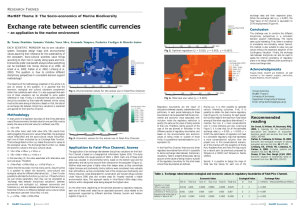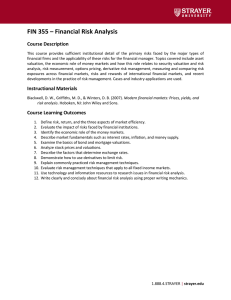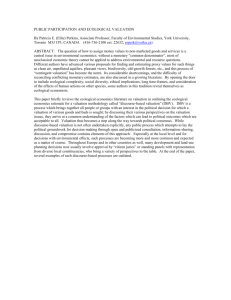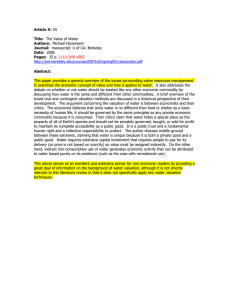Exchange rate between scientific currencies. An application to the marine environment
advertisement
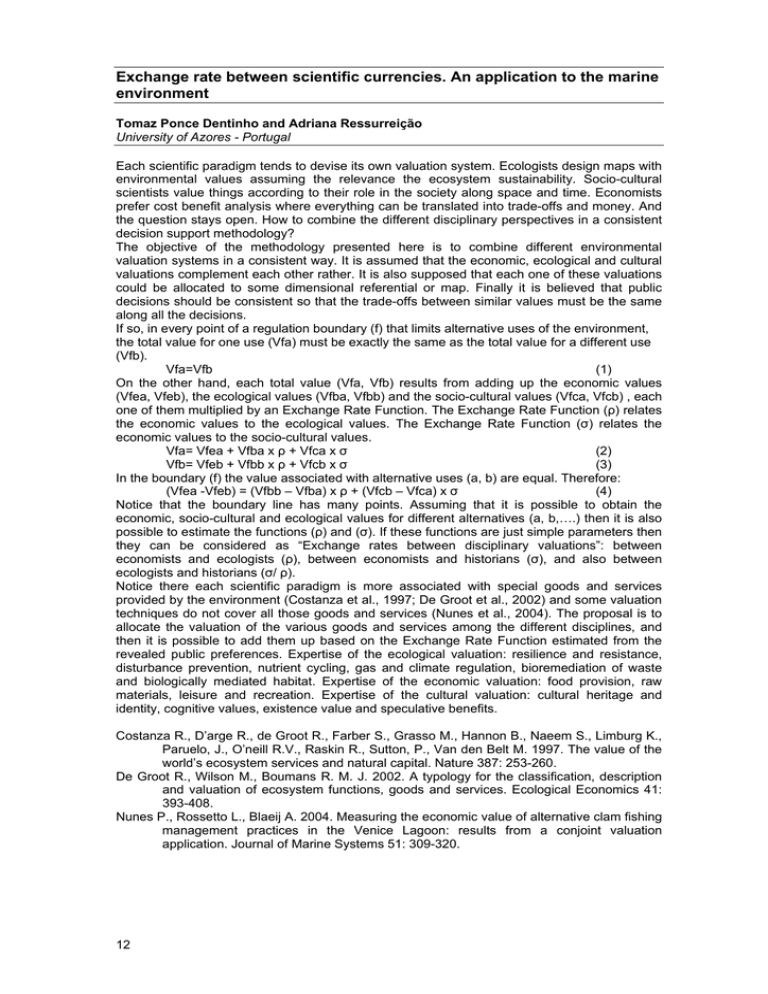
Exchange rate between scientific currencies. An application to the marine environment Tomaz Ponce Dentinho and Adriana Ressurreição University of Azores - Portugal Each scientific paradigm tends to devise its own valuation system. Ecologists design maps with environmental values assuming the relevance the ecosystem sustainability. Socio-cultural scientists value things according to their role in the society along space and time. Economists prefer cost benefit analysis where everything can be translated into trade-offs and money. And the question stays open. How to combine the different disciplinary perspectives in a consistent decision support methodology? The objective of the methodology presented here is to combine different environmental valuation systems in a consistent way. It is assumed that the economic, ecological and cultural valuations complement each other rather. It is also supposed that each one of these valuations could be allocated to some dimensional referential or map. Finally it is believed that public decisions should be consistent so that the trade-offs between similar values must be the same along all the decisions. If so, in every point of a regulation boundary (f) that limits alternative uses of the environment, the total value for one use (Vfa) must be exactly the same as the total value for a different use (Vfb). Vfa=Vfb (1) On the other hand, each total value (Vfa, Vfb) results from adding up the economic values (Vfea, Vfeb), the ecological values (Vfba, Vfbb) and the socio-cultural values (Vfca, Vfcb) , each one of them multiplied by an Exchange Rate Function. The Exchange Rate Function (ρ) relates the economic values to the ecological values. The Exchange Rate Function (σ) relates the economic values to the socio-cultural values. Vfa= Vfea + Vfba x ρ + Vfca x σ (2) Vfb= Vfeb + Vfbb x ρ + Vfcb x σ (3) In the boundary (f) the value associated with alternative uses (a, b) are equal. Therefore: (Vfea -Vfeb) = (Vfbb – Vfba) x ρ + (Vfcb – Vfca) x σ (4) Notice that the boundary line has many points. Assuming that it is possible to obtain the economic, socio-cultural and ecological values for different alternatives (a, b,….) then it is also possible to estimate the functions (ρ) and (σ). If these functions are just simple parameters then they can be considered as “Exchange rates between disciplinary valuations”: between economists and ecologists (ρ), between economists and historians (σ), and also between ecologists and historians (σ/ ρ). Notice there each scientific paradigm is more associated with special goods and services provided by the environment (Costanza et al., 1997; De Groot et al., 2002) and some valuation techniques do not cover all those goods and services (Nunes et al., 2004). The proposal is to allocate the valuation of the various goods and services among the different disciplines, and then it is possible to add them up based on the Exchange Rate Function estimated from the revealed public preferences. Expertise of the ecological valuation: resilience and resistance, disturbance prevention, nutrient cycling, gas and climate regulation, bioremediation of waste and biologically mediated habitat. Expertise of the economic valuation: food provision, raw materials, leisure and recreation. Expertise of the cultural valuation: cultural heritage and identity, cognitive values, existence value and speculative benefits. Costanza R., D’arge R., de Groot R., Farber S., Grasso M., Hannon B., Naeem S., Limburg K., Paruelo, J., O’neill R.V., Raskin R., Sutton, P., Van den Belt M. 1997. The value of the world’s ecosystem services and natural capital. Nature 387: 253-260. De Groot R., Wilson M., Boumans R. M. J. 2002. A typology for the classification, description and valuation of ecosystem functions, goods and services. Ecological Economics 41: 393-408. Nunes P., Rossetto L., Blaeij A. 2004. Measuring the economic value of alternative clam fishing management practices in the Venice Lagoon: results from a conjoint valuation application. Journal of Marine Systems 51: 309-320. 12



